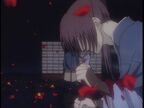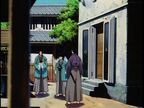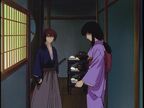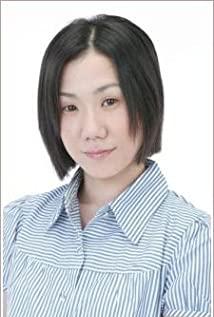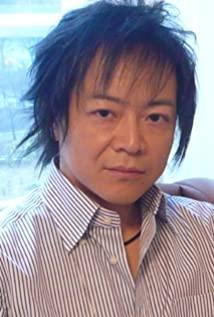Let’s talk about emotional awareness first. After watching the interview with the director that came with Animatrix, I noticed something special about Japanese anime—a lot of stills! "The Rogue" theatrical version is no exception. A lot of pictures show only the opening and closing of a cherry lip of Xuedaiba, or the petals falling slowly on a still snowy background... Japanese people are really lazy, and this is how hundreds of minutes of animation programs are produced every week. .
However, I don't mean to scold them. This kind of effect cannot be reflected in the dynamic European and American cartoons. Anime and animation are really different things. Anime is somewhat like a stage play, with a fixed background and active actors. If the actors do not appear, the background and music can also set off the atmosphere. And animation is like TV or movies. If there is a completely still picture, you will most likely feel that there is a problem with the electrical appliances in front of or behind you...
Therefore, anime is born with such a quiet atmosphere like a stage play. As for you watching The resulting blood or hilarious anime is the result of other effects overshadowing this serenity. What is needed in "Memories" is this kind of tranquility, or this style is just right for its selection. Whether it is the chill before the war or the blandness of rural life, they are all beautiful and impressive because of this static style.
In addition, the work of the voice actors and artists is also commendable. Hiimura's dubbing Ryukaze Masayo's voice in this theatrical animation is cold and hard, which is completely different from the image in the TV version where he turns into goldfish eyes with a funny "O RO~" sound. Their professional level is really other than others. National voice actors are out of reach. The style of painting is also very different from the TV version. It is more adult-like and more solemn, and it is closer to the original comics. Some scenes, such as Kenshin's trek in the snow and the final confrontation with Saito, are classic scenes in the theatrical animation.
Well, then there's the plot. At first, a teenager who was still in troubled times was rescued by a master of martial arts, and then he learned swordsmanship and used his own sword to pursue the path of justice that he thought was the same old story. But since poor Kiyosato was killed, the whole film is really about the question of whether it is appropriate to destroy everything in the old world in order to build a new world. Heimun, who worked as a killer with the idea of saving the world with a sword, must have been shaken and doubted after fighting against Kiyosato.
The appearance of Ba and the refuge of the two of them in the countryside is the most peaceful and tense part of the whole play. In addition to the peaceful life of the two, there are all kinds of conspiracies, and there is a sense of quietness and endless wind. The difficulty of "escaping the world" makes people feel very helpless.
The final ending was even more helpless, but perhaps it was this helplessness that made Feicun realize that the only pain that Ba Dao Zhai's reputation brought to him was the pain of restlessness, and he embarked on a different road of wandering from Zhi Zhixiong. From this point of view, it was Seidaiba who saved Kenshin Hiimura.
If you can understand that a person who has murdered in war will also repent under certain circumstances, instead of seeing such behavior as hypocrisy or cover-up, you should be able to understand the meaning of "Remembrance".
View more about Rurouni Kenshin: Trust and Betrayal reviews



